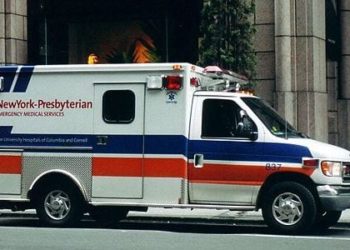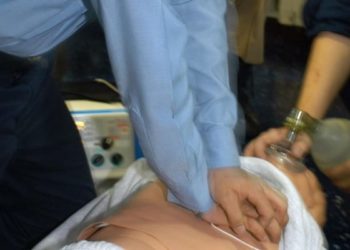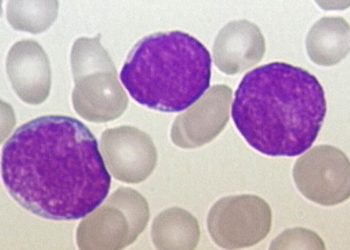Biomarkers demonstrate neuroprognostic accuracy for patients with hypoxic ischemic brain injury following cardiac arrest
1. This systematic review and meta-analysis demonstrated that among over 10,000 patients, neurofilament light provided the most accurate neurologic prognostication for patients with hypoxic ischemic brain injury following cardiac arrest.
2. Neurofilament light and tau protein were reported to be the most sensitive predictors of secondary brain hypoxia in patients with hypoxic ischemic brain injury post-cardiac arrest.
Evidence Rating Level: 1 (Excellent)
Study Rundown: Hypoxic ischemic brain injury (HIBI) is a primary determinant of neurological outcomes and survival in patients following cardiac arrest. Subcortical white matter is a major anatomical site of HIBI and survivors of HIBI can experience a spectrum of unfavorable neurological outcomes, hence the need for accurate neuroprognostic tools. This systematic review and meta-analysis sought to investigate the neuroprognostic utility of brain injury biomarkers in patients with HIBI after cardiac arrest. From 1652 unique records identified over six major electronic databases, the review included 86 studies for quantitative synthesis (10,567 total participants, 2790 women [26.4%], pooled mean [SD] age, 62.8 [10.2] years). The brain biomarkers that were used in this study include: Neurofilament light chain (Nf-1), tau protein, Ubiquitin carboxyl hydrolase L1 (UCH-L1), Neuron-specific enolase (NSE), S100 calcium-binding protein ß (S100ß), and, glial fibrillary acidic protein (GFAP). In particular, biomarkers Nf-1, followed by tau protein, demonstrated the highest diagnostic accuracy in predicting neurological outcomes. With a specificity weighting of 85%, Nf-1 demonstrated an optimal threshold of 1361pg/mL, with a sensitivity rate of 68% and was the most accurate in reflecting axonal injury. In patients with HIBI following cardiac arrest, both Nf-1 and tau protein were found to be the most sensitive markers of secondary brain hypoxia. This novel study presented clinically relevant data that demonstrated the optimal threshold, sensitivity and specificity, and summary receiver operating characteristic curves for six unique brain biomarkers in the blood with previously demonstrated neuroprognostic utility in patients with HIBI. Limitations to this study, however, were the inclusion of several poor-quality studies as well as the substantial heterogeneity in included studies.
Click to read the study in JAMA Neurology
Relevant Reading: Prognostication after cardiac arrest
In-Depth [systematic review and meta-analysis]: This systematic review and meta-analysis pooled data from 86 included studies evaluating at least one brain biomarker (NSE, Nf-1, tau protein, UCH-L1, GFAP, S100ß) in the blood to prognosticate neurological outcomes in patients with HIBI following cardiac arrest. A systematic search was conducted from six electronic databases (Embase, Medline, CINAHL, EBM Reviews, Cochrane Database of Systemic Reviews, WHO Global Health Library) in September 2021 and generated 1652 unique records. From the 86 included articles, there were a total of 10,567 total participants, 2790 women [26.4%], pooled mean [SD] age, 62.8 [10.2] years. Nf-1 and tau protein were found to have the highest area under the curve (AUC) of 0.92 (95% CI, [0.84-0.97]) and 0.89 (95% CI, [0.71-0.97]), respectively. Under specificity weighting of 85%, 80% and 75%, Nf-L demonstrated optimal thresholds at 1361pg/mL (sensitivity, 0.68; specificity, 0.98), 1034pg/mL (sensitivity, 0.71; specificity, 0.97), and 827pg/mL (sensitivity, 0.74; specificity, 0.96), respectively. In comparison, at specificity weightings of 85%, 80% and 75%, NSE generated lower optimal thresholds at 64.1ug/L (sensitivity, 0.46; specificity, 0.97), 53.7ug/L (sensitivity, 0.52; specificity, 0.96), 46.7ug/L (sensitivity, 0.57; specificity, 0.96), respectively. These results suggest that among the six biomarkers evaluated, Nf-L has demonstrated the greatest prognostic capacity and accuracy in predicting unfavorable neurological outcomes in patients with HIBI following cardiac arrest.
Image: PD
©2022 2 Minute Medicine, Inc. All rights reserved. No works may be reproduced without expressed written consent from 2 Minute Medicine, Inc. Inquire about licensing here. No article should be construed as medical advice and is not intended as such by the authors or by 2 Minute Medicine, Inc.







